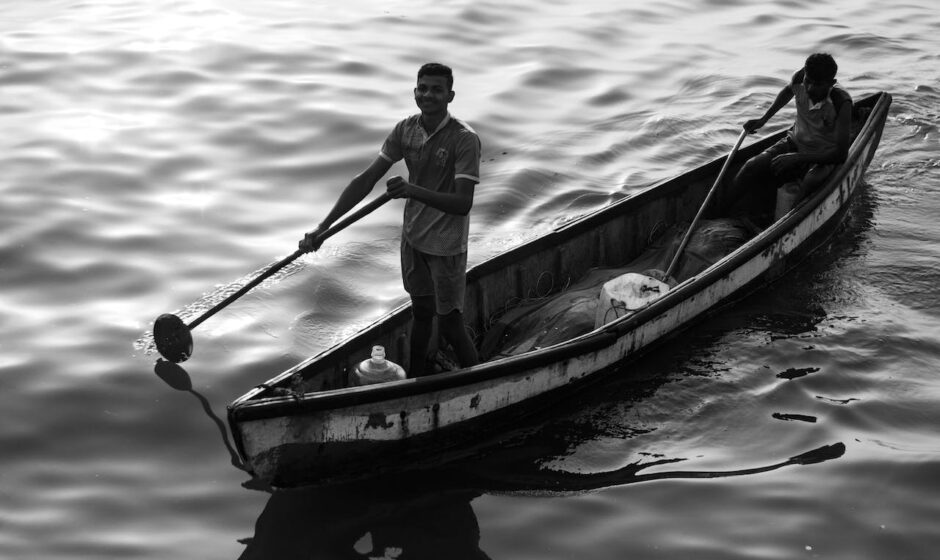A Shadow Over a Vital Profession:
The commercial fishing industry, despite its vital role in feeding the world, casts a long shadow over safety. Every year, hundreds of fishers succumb to injuries, while over 80 tragically lose their lives. Among these fatalities, drowning reigns supreme, leaving families heartbroken and communities devastated. The impact is particularly stark within the small-scale fishing sector, where thousands of lives are lost annually, often due to preventable causes.
Drowning: A Multifaceted Problem
Falling overboard, capsized vessels, and entanglement in fishing gear stand as the grim reaper’s instruments, claiming the lives of countless fishers. This harsh reality compels the Food and Agriculture Organization (FAO) to take decisive action, leading the charge in promoting fishing safety through a comprehensive and multifaceted approach.
Building a Culture of Safety:
Empowering fishers to navigate dangers and operate safely is a cornerstone of FAO’s strategy. This is achieved through:
1. Capacity Development: Providing rigorous training programs and workshops equips fishers with the knowledge and skills necessary to make informed decisions and handle challenging situations at sea.
2. Standardized Practices: Establishing clear codes of conduct and regulations for safe fishing practices ensures consistent adherence to best practices, minimizing risks and creating a safer environment for everyone involved.
3. Safety Above All: Implementing and enforcing stringent regulations that prioritize safe vessel construction, mandatory equipment requirements, and robust operational protocols create a framework for safety, ensuring fishers have the tools and resources they need to stay safe.
4. Equipping for Survival: Promoting the widespread use of personal flotation devices (PFDs) and other essential safety equipment provides crucial protection in life-threatening situations, potentially turning the tide in the face of danger.
5. Building Safer Vessels: Designing and constructing vessels with enhanced stability, robust emergency response capabilities, and proper maintenance procedures minimizes risks and improves safety at sea, giving fishers a stronger footing against the unpredictable nature of their work.
6. Managing the Unexpected: Providing access to fisheries insurance solutions offers financial protection to fishers and their families in the event of accidents or fatalities, mitigating the economic impact of these unforeseen events.
Tackling the Challenges:
Small-scale fishers often face unique challenges that exacerbate their vulnerability to drowning. The lack of readily available safety equipment, including life jackets, and limited access to reliable communication and emergency messaging technology hinders their ability to respond effectively in emergency situations.
To address these specific challenges, FAO collaborates with governments to develop and implement “train-the-trainer” courses on safety at sea, specifically tailored for the needs of small-scale fisheries. These programs, successfully implemented in the Caribbean, Pacific Islands, East Africa, and the Near East and Central Asia, are planned for expansion to Sri Lanka and the Philippines, ensuring a wider reach and greater impact.
Global Collaboration:
Recognizing the multifaceted nature of drowning and its devastating impact on the fishing industry, WHO and FAO have joined forces to raise awareness and implement effective prevention strategies. Dr. David Meddings, Technical Lead for Drowning Prevention at WHO, emphasizes, “Drowning transcends borders and sectors. Ensuring the safety of fishers is a crucial step in our global fight against this preventable tragedy.”
Furthermore, partnerships with ILO, IMO, and other international and regional organizations strengthen the global movement towards safer fishing practices and decent work for all fishers, creating a formidable force for positive change.
Moving Forward:
Through its dedicated efforts and ongoing collaborations, FAO continues to lead the charge in promoting safety and improving working conditions within the fishing industry. By prioritizing safety education, implementing essential regulations, and fostering a culture of responsibility, we can strive towards a future where no fisher loses their life at sea. This requires collective action and unwavering commitment from all stakeholders, but together, we can turn the tide and ensure that the fishing industry thrives while protecting the invaluable lives of those who dedicate themselves to feeding the world. Let us make the future of fishing a future free from the silent threat of drowning.

